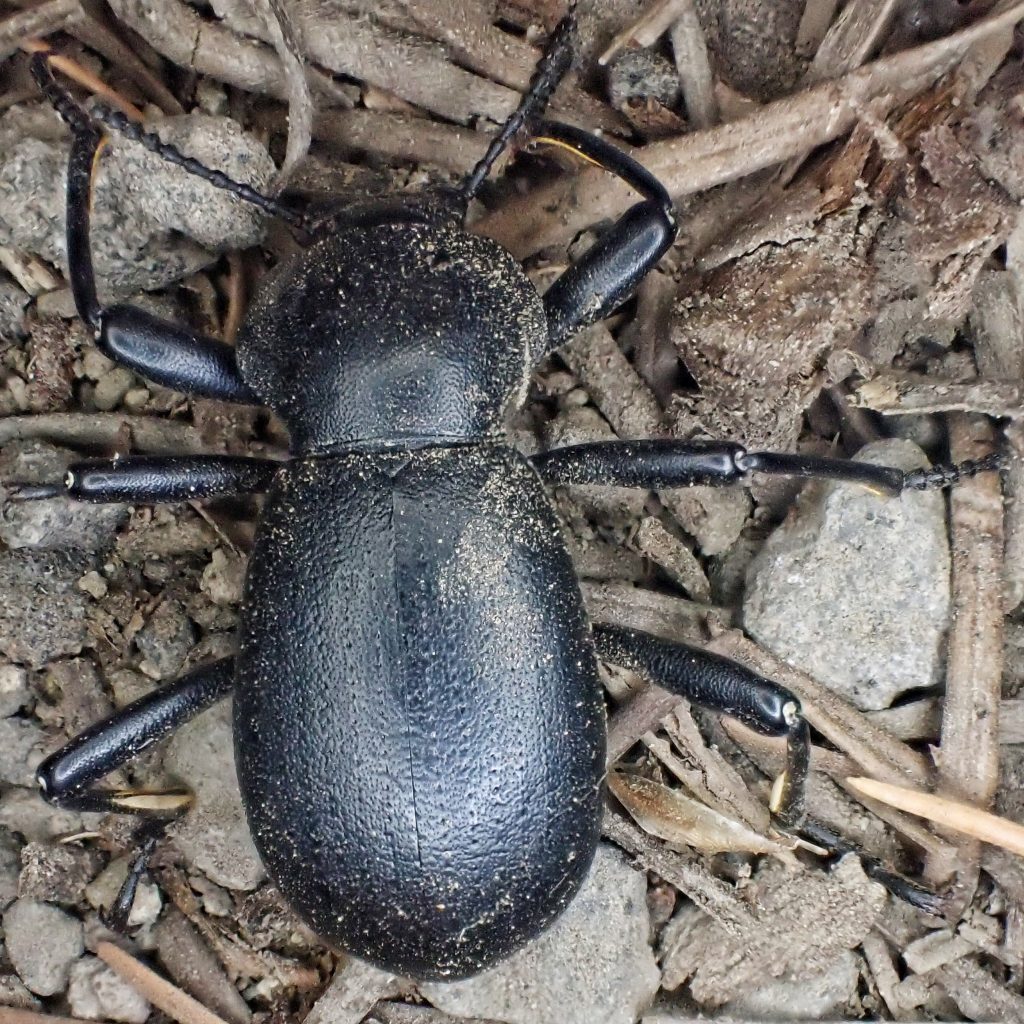
When I first saw this darkling beetle (family Tenebrionidae) moving along the road I was walking to get between my lights during the ‘ Trip to Mt. Adams , I immediately assumed it was an Eleodes beetle, and that was exciting enough, because I’ve been wanting to positively identify and profile one of those for awhile, and I’ve only talked about two other tenebrionids. But when I looked into it in “Pacific Northwest Insects” I saw the photo of Coelocnemis californica (which is now C. dilaticollis), and it looked very much like my specimen. And the kicker was the mention of the yellow haired tibias of Coelocnemis, a trait not possessed by Eleodes, which I could plainly see in my photos.
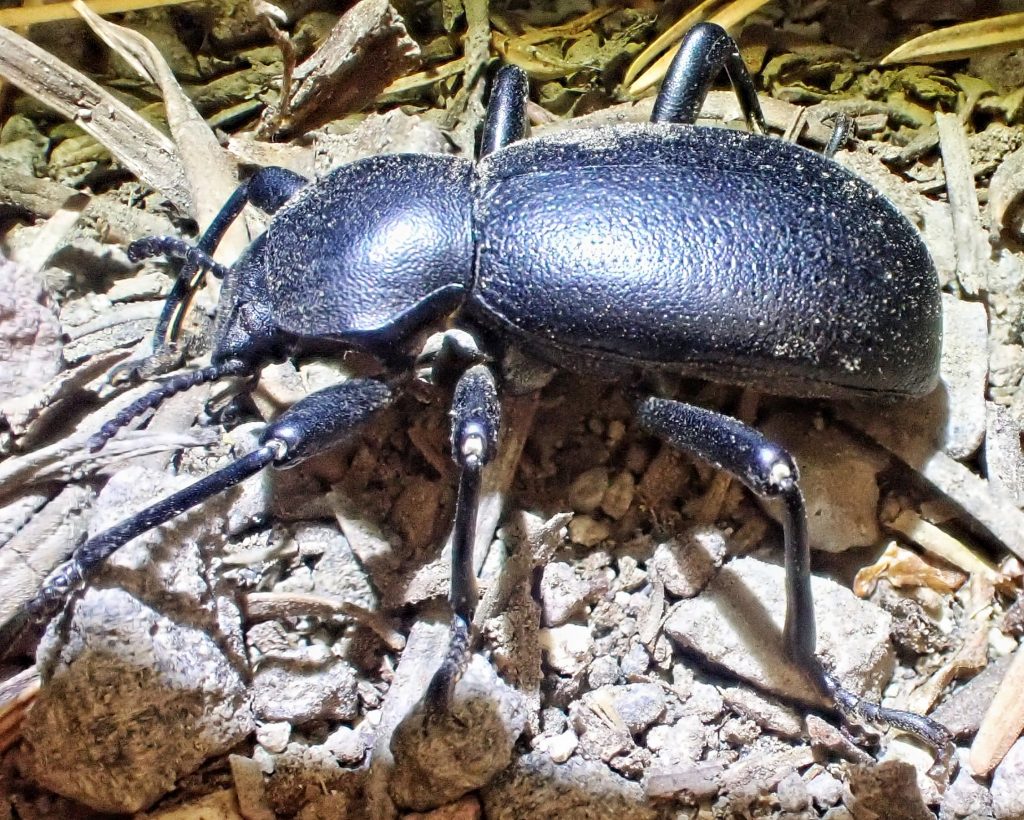
But from there it got much trickier to identify this ‘false stink beetle’ (since apparently Eleodes are the ‘true’ stink beetle), because I had a heckuva time finding a key that I could access for Coelocnemis, or even a differential description that offered more than that C. magna was ‘shinier’ than C. dilaticollis, which had me leaning toward the former. Finally, back at home and combing somewhat randomly through photos of various Coelocnemis, I ran into a pasted key on a BugGuide entry for C. lucia (the key can be found here-Coelocnemis lucia Doyen – Coelocnemis lucia – BugGuide.Net) and though I had to euthanize the beetle (which will now dwell in Craig Sondergaard’s extensive insect collection for posterity) to see what I needed to see, I was able to positively identify it as Coelocnemis dilaticollis.
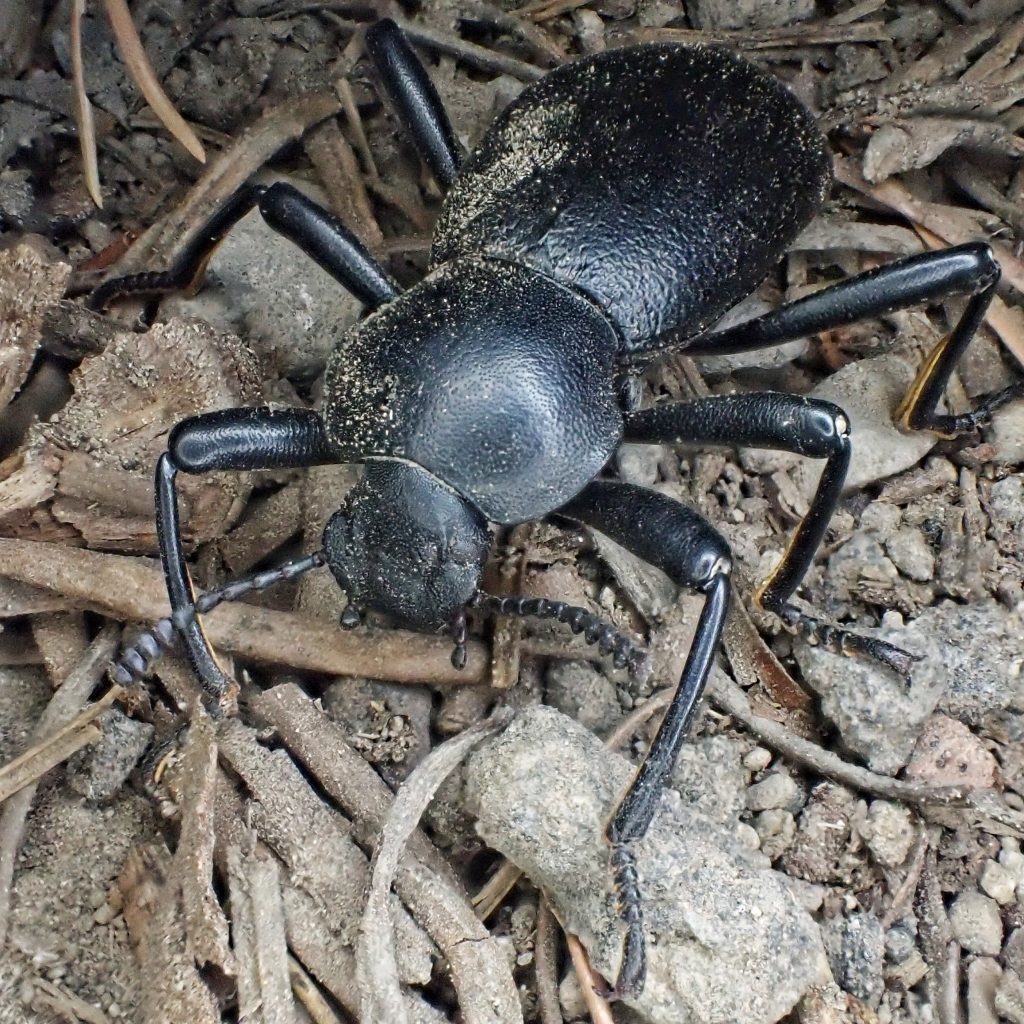
But make no mistake- they are still stink beetles, and “…do the “headstand” behavior in self-defense. They … secrete smelly defensive chemicals from glands at the tip of the abdomen that effectively repel all but the most determined vertebrate predators. Grasshopper mice are well-known for disarming the beetles by jamming the bug’s rear end into the ground and then eating the head and thorax.” https://bugeric.blogspot.com/2014/05/big-black-beetles-coelocnemis.html
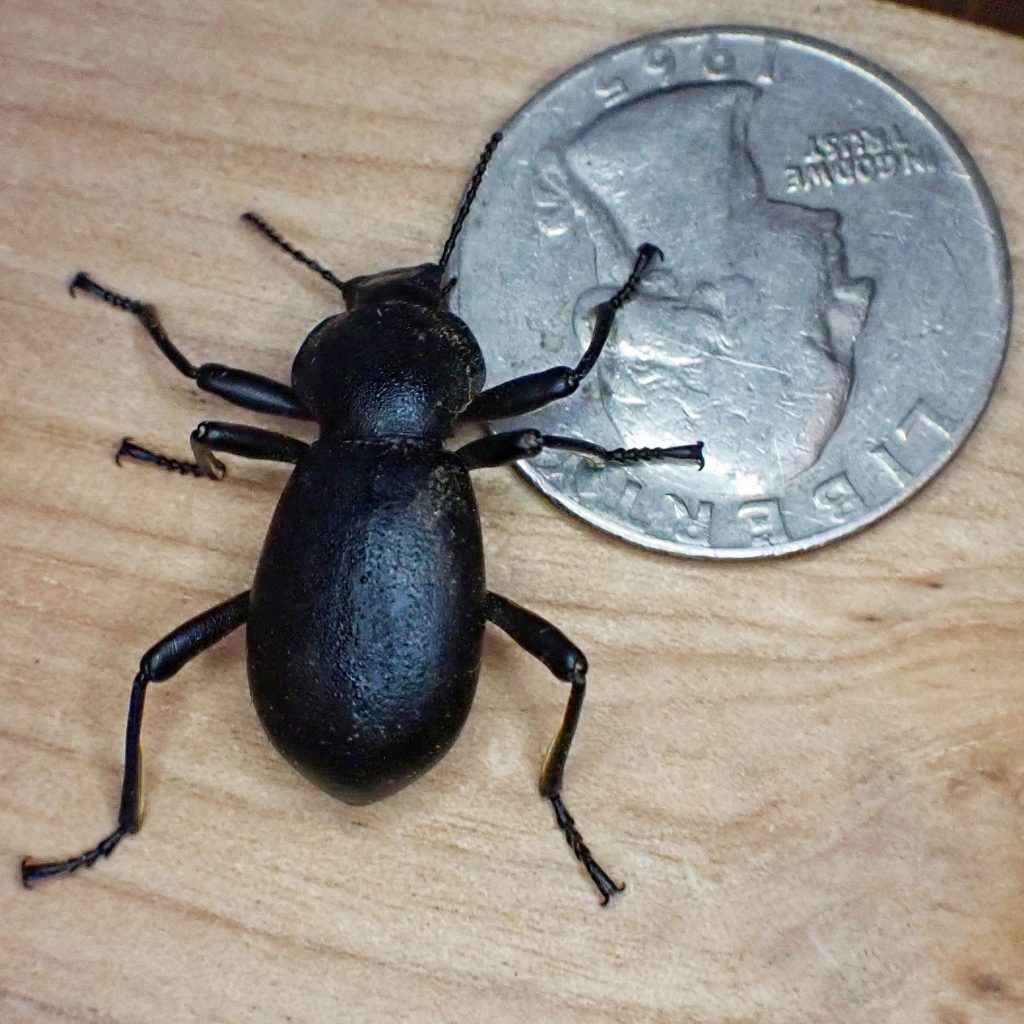
Description– Large (19-29mm) black beetle with two rows of yellow setae on the inner tibia of each leg; pronotum wider than long, widest in the middle; elytra more than half as wide as long; hypomeron (the visible part of the ventral side of the pronotum) coarsely punctured, and the head, pronotum and elytra finely punctured
Similar species– Coelocnemis magna and C. sulcata have smooth hypomeron; C. punctatum has pronotum widest in front half, and elytra less than half as wide as long; C. rugulosa has pronotum and head coarsest punctured; Eleodes spp. lack yellow setae on tibia.
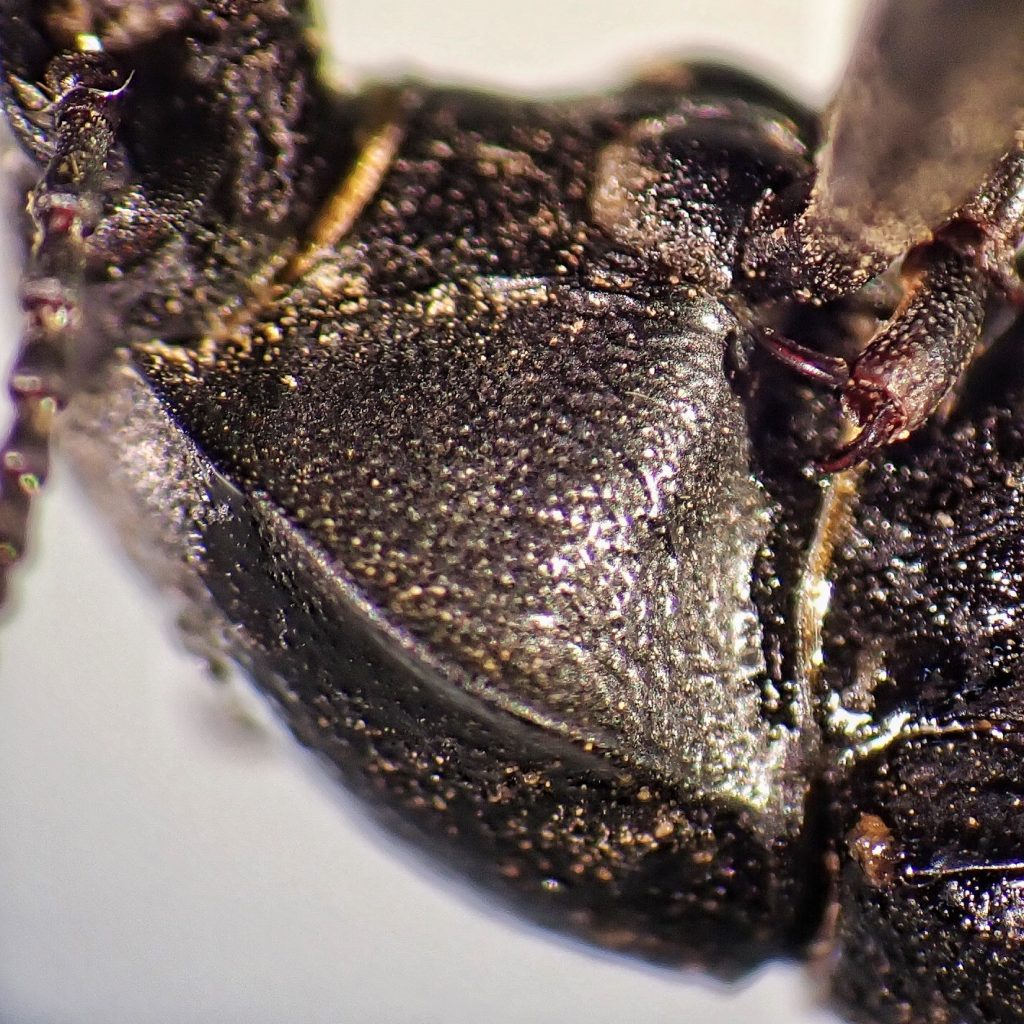
Habitat– Mesic to arid forested areas; often under bark or logs
Range– Western North America; found region wide in the PNW, but much more common east of the Cascades.
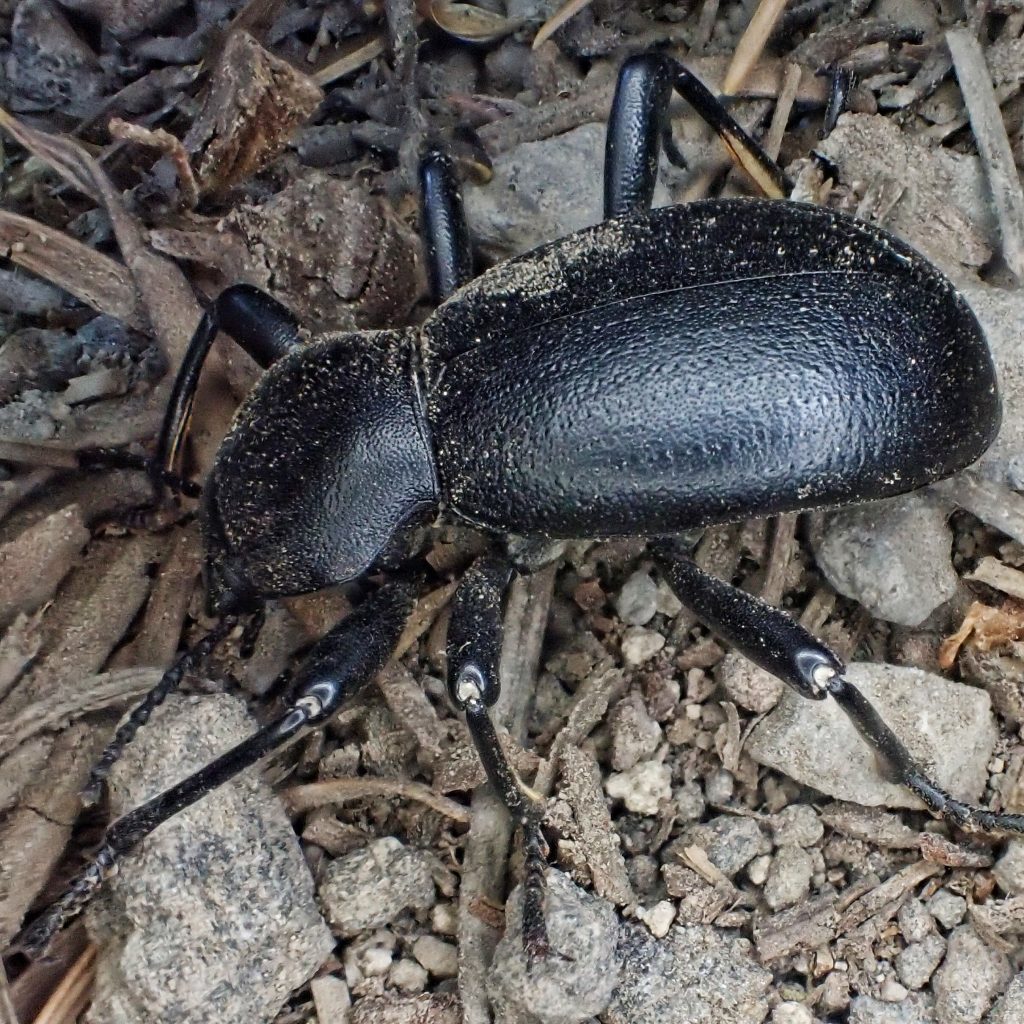
Eats– “While we couldn’t locate specific diet information for this species, members of this genus eat a variety of plant matter, including whole grains, lichens, and fungi.” California Broad-necked Darkling Beetle (Coelocnemis dilaticollis) – Missoula Butterfly House & Insectarium
Eaten by– Whatever can stomach or get around their defenses, like the grasshopper mice mentioned above.
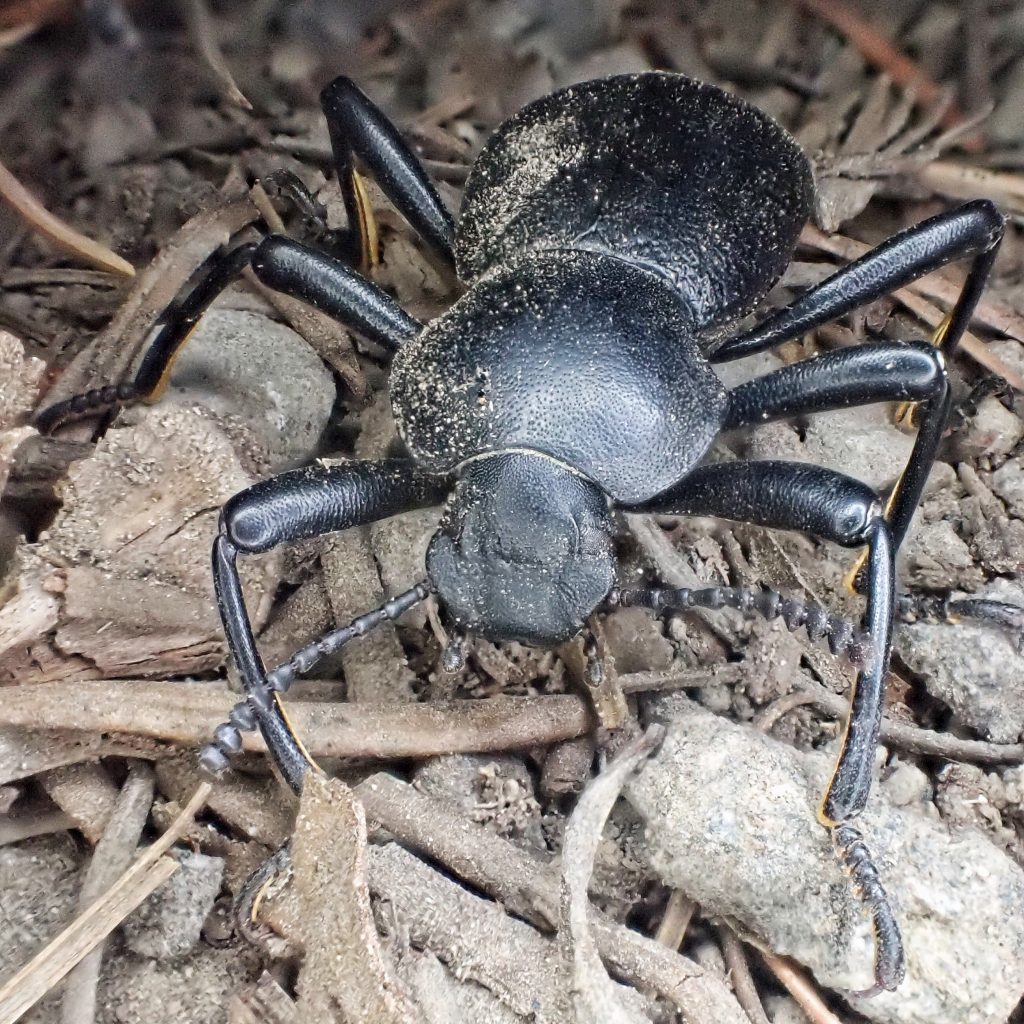
Adults active– May be found year around, but less active in winter.
Life cycle– “They are durable animals that can live at least three years. They hibernate in small groups in dry, protected niches…The larvae of Coelocnemis do resemble mealworms, except A.) they are a lot larger in size and B.) they are armed at the rear with a pair of hook-like prongs and a series of much smaller teeth behind the prongs.” https://bugeric.blogspot.com/2014/05/big-black-beetles-coelocnemis.html
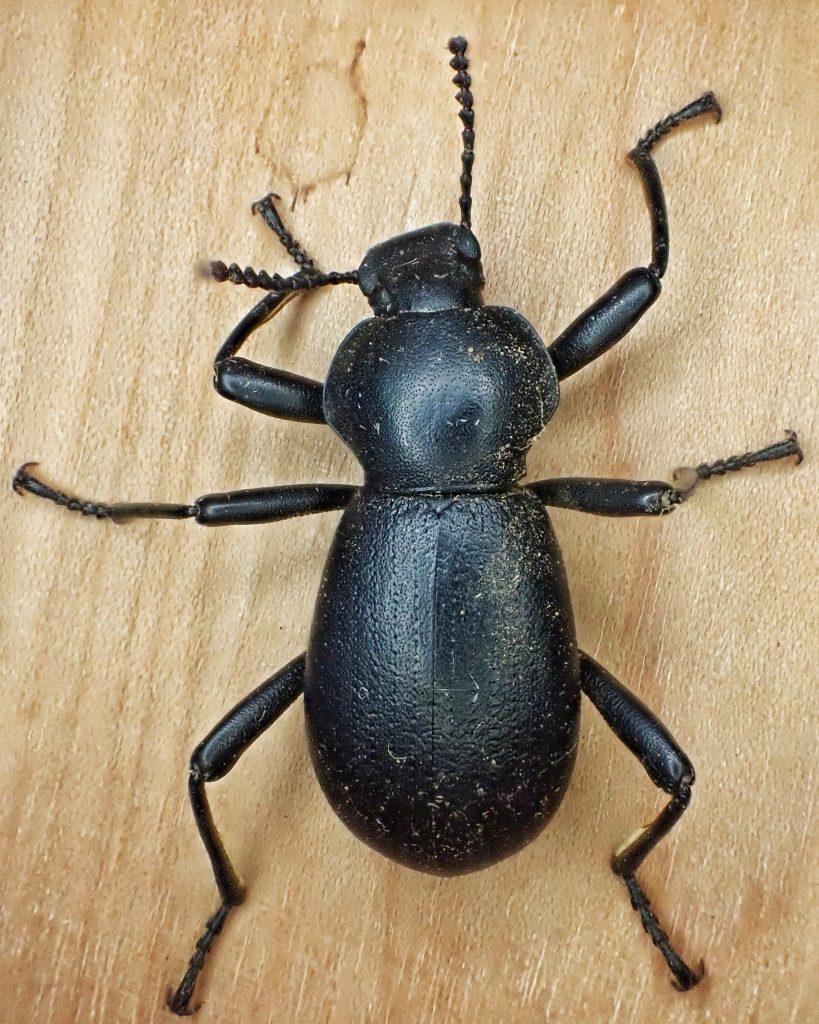
Etymology of names– Coelocnemis is from the Greek words for ‘hollow shin’, which may be a reference to the gap between the rows of yellow setae on the tibia. The specific epithet dilaticollis is from the Latin words for ‘dilated neck’, although it is unclear whether that refers to the area immediately behind the head (which doesn’t seem particularly broad in comparison to other members of the genus) or to the pronotum, which is wider than most Coelocnemis.
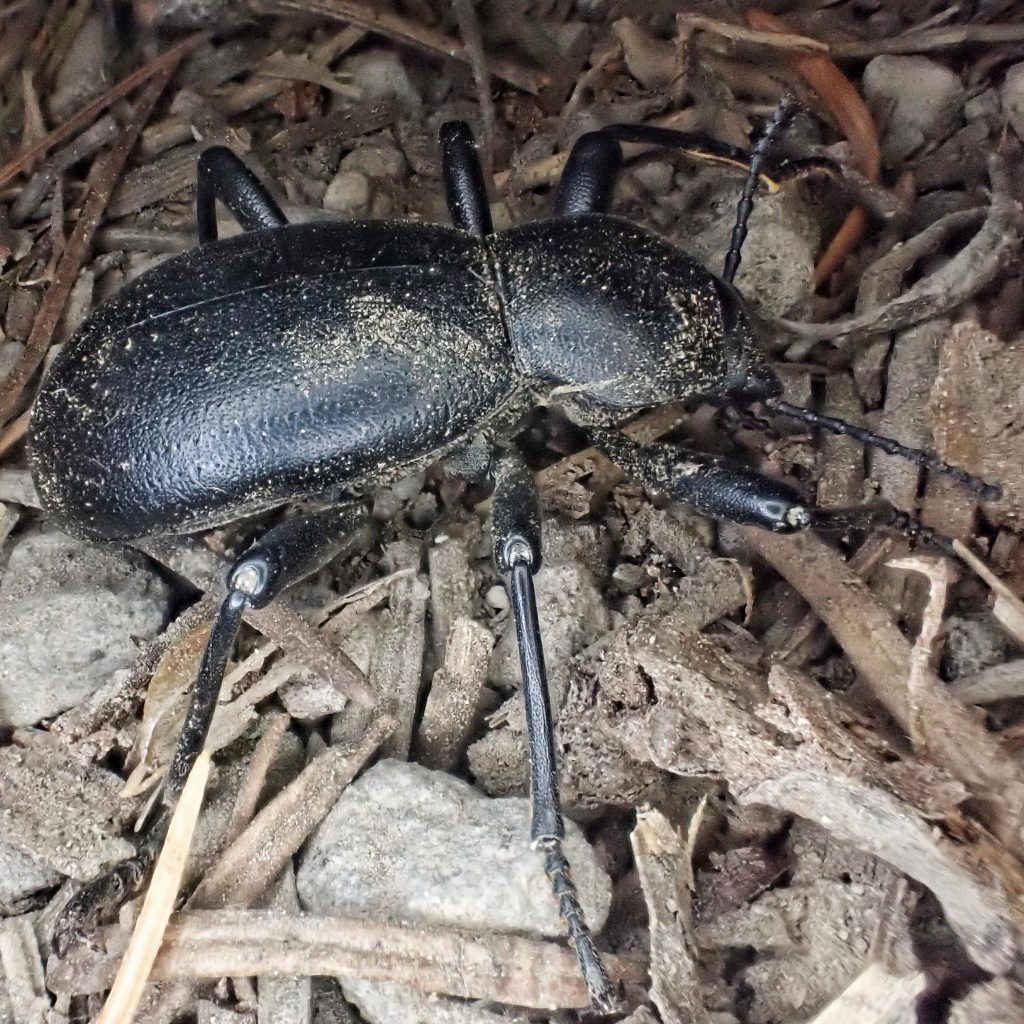
Darkling Beetle: Coelocnemis californica – What’s That Bug?
Species Coelocnemis dilaticollis – California Broad-necked Darkling Beetle – BugGuide.Net
https://bugeric.blogspot.com/2014/05/big-black-beetles-coelocnemis.html
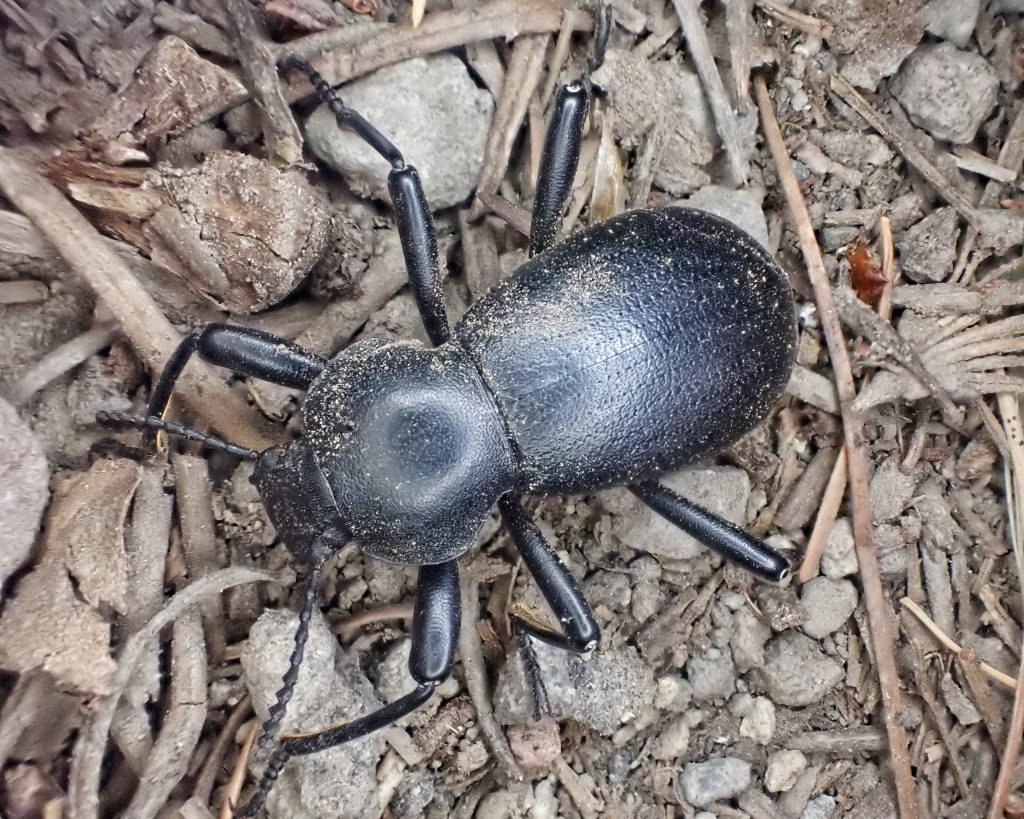
“Grasshopper mice are well-known for disarming the beetles by jamming the bug’s rear end into the ground and then eating the head and thorax.”
Now THAT would be something to see!
Yes it would, Kat!
I love this!
They are a cool bug!